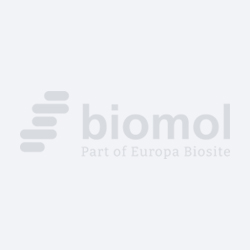Cookie preferences
This website uses cookies, which are necessary for the technical operation of the website and are always set. Other cookies, which increase the comfort when using this website, are used for direct advertising or to facilitate interaction with other websites and social networks, are only set with your consent.
Configuration
Technically required
These cookies are necessary for the basic functions of the shop.
"Allow all cookies" cookie
"Decline all cookies" cookie
CSRF token
Cookie preferences
Currency change
Customer-specific caching
FACT-Finder tracking
Individual prices
Selected shop
Session
Comfort functions
These cookies are used to make the shopping experience even more appealing, for example for the recognition of the visitor.
Note
Show the facebook fanpage in the right blod sidebar
Statistics & Tracking
Affiliate program
Conversion and usertracking via Google Tag Manager
Track device being used

| Item number | Size | Datasheet | Manual | SDS | Delivery time | Quantity | Price |
|---|---|---|---|---|---|---|---|
| E3371-02N.200 | 200 µl | - | - |
3 - 19 business days* |
728.00€
|
If you have any questions, please use our Contact Form.
You can also order by e-mail: info@biomol.com
Larger quantity required? Request bulk
You can also order by e-mail: info@biomol.com
Larger quantity required? Request bulk
Ephrin receptors and their ligands, the ephrins, mediate numerous developmental processes,... more
Product information "Anti-EPHB2 (Ephrin Type-B Receptor 2, Tyrosine-protein Kinase Receptor EPH-3, DRT, Receptor Protein-"
Ephrin receptors and their ligands, the ephrins, mediate numerous developmental processes, particularly in the nervous system. Based on their structures and sequence relationships, ephrins are divided into the ephrin-A (EFNA) class, which are anchored to the membrane by a glycosylphosphatidylinositol linkage, and the ephrin-B (EFNB) class, which are transmembrane proteins. The Eph family of receptors are divided into 2 groups based on the similarity of their extracellular domain sequences and their affinities for binding ephrin-A and ephrin-B ligands. Ephrin receptors make up the largest subgroup of the receptor tyrosine kinase (RTK) family. The ligand-activated form of EphB2, which belongs to the Tyr family of protein kinases, interacts with multiple proteins, including GTPase-activating protein (RASGAP) through its SH2 domain. It binds RASGAP through the juxtamembrane tyrosines residues, and also interacts with PRKCABP and GRIP1 This type I membrane protein is expressed in brain, heart, lung, kidney, placenta, pancreas, liver and skeletal muscle. It is preferentially expressed in fetal brain. This protein contains putatively 2 fibronectin type III domains and 1 sterile alpha motif (SAM) domain. Applications: Suitable for use in ELISA, Western Blot, Flow Cytometry and Immunohistochemistry. Other applications not tested. Recommended Dilution: Western Blot: 1:1000, Immunohistochemistry (FFPE): 1:200, Flow Cytometry: 1:10-1:50, Optimal dilutions to be determined by the researcher. Storage and Stability: May be stored at 4°C for short-term only. Aliquot to avoid repeated freezing and thawing. Store at -20°C. Aliquots are stable for 12 months after receipt. For maximum recovery of product, centrifuge the original vial after thawing and prior to removing the cap.
| Keywords: | Anti-DRT, Anti-EK5, Anti-hEK5, Anti-EPHB2, EC=2.7.10.1, Anti-EPH-like kinase 5, Anti-EPH tyrosine kinase 3, Anti-Ephrin type-B receptor 2, Anti-ELK-related tyrosine kinase, Anti-Tyrosine-protein kinase TYRO5, Anti-Renal carcinoma antigen NY-REN-47 |
| Supplier: | United States Biological |
| Supplier-Nr: | E3371-02N |
Properties
| Application: | ELISA, FC, IHC, WB |
| Antibody Type: | Monoclonal |
| Clone: | 10i37 |
| Conjugate: | No |
| Host: | Mouse |
| Species reactivity: | human |
| Immunogen: | Purified His-tagged EPHB2 protein (fragment). |
| Format: | Affinity Purified |
Database Information
| KEGG ID : | K05111 | Matching products |
| UniProt ID : | P29323 | Matching products |
| Gene ID | GeneID 2048 | Matching products |
Handling & Safety
| Storage: | -20°C |
| Shipping: | +4°C (International: +4°C) |
Caution
Our products are for laboratory research use only: Not for administration to humans!
Our products are for laboratory research use only: Not for administration to humans!
Information about the product reference will follow.
more
You will get a certificate here
Viewed



